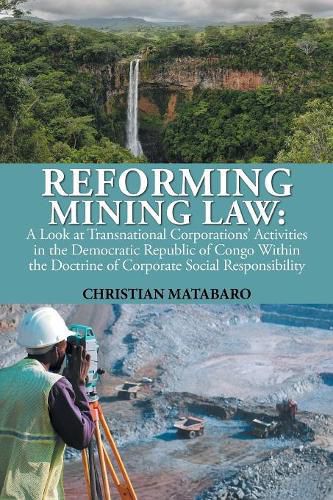Readings Newsletter
Become a Readings Member to make your shopping experience even easier.
Sign in or sign up for free!
You’re not far away from qualifying for FREE standard shipping within Australia
You’ve qualified for FREE standard shipping within Australia
The cart is loading…






This title is printed to order. This book may have been self-published. If so, we cannot guarantee the quality of the content. In the main most books will have gone through the editing process however some may not. We therefore suggest that you be aware of this before ordering this book. If in doubt check either the author or publisher’s details as we are unable to accept any returns unless they are faulty. Please contact us if you have any questions.
The Democratic Republic of Congo is endowed with immense mineral wealth. Its minerals include cobalt, copper, diamond, gold, iron, manganese, tantalum, tin, tungsten, and zinc. Yet the contribution of mineral abundance to the country’s economic development is poor. The Congolese mining sector was initiated in 1905 with the creation of OKIMO (Office des Mines d'or de Kilo Moto) and UMHK (Union Miniere du Haut-Katanga). The rapid development of mining companies improved economic growth until 1973, when President Mobutu introduced a variety of inadequate economic policies, including zairianization and radicalization, that slowed down economic development. The actual mining code was adopted in 2002 to enhance a mining sector that already collapsed. This study suggests a variety of mechanisms and measures that are meant to energize the Congolese mining sector and, hence, allow the country to benefit entirely from its mineral abundance.
$9.00 standard shipping within Australia
FREE standard shipping within Australia for orders over $100.00
Express & International shipping calculated at checkout
This title is printed to order. This book may have been self-published. If so, we cannot guarantee the quality of the content. In the main most books will have gone through the editing process however some may not. We therefore suggest that you be aware of this before ordering this book. If in doubt check either the author or publisher’s details as we are unable to accept any returns unless they are faulty. Please contact us if you have any questions.
The Democratic Republic of Congo is endowed with immense mineral wealth. Its minerals include cobalt, copper, diamond, gold, iron, manganese, tantalum, tin, tungsten, and zinc. Yet the contribution of mineral abundance to the country’s economic development is poor. The Congolese mining sector was initiated in 1905 with the creation of OKIMO (Office des Mines d'or de Kilo Moto) and UMHK (Union Miniere du Haut-Katanga). The rapid development of mining companies improved economic growth until 1973, when President Mobutu introduced a variety of inadequate economic policies, including zairianization and radicalization, that slowed down economic development. The actual mining code was adopted in 2002 to enhance a mining sector that already collapsed. This study suggests a variety of mechanisms and measures that are meant to energize the Congolese mining sector and, hence, allow the country to benefit entirely from its mineral abundance.